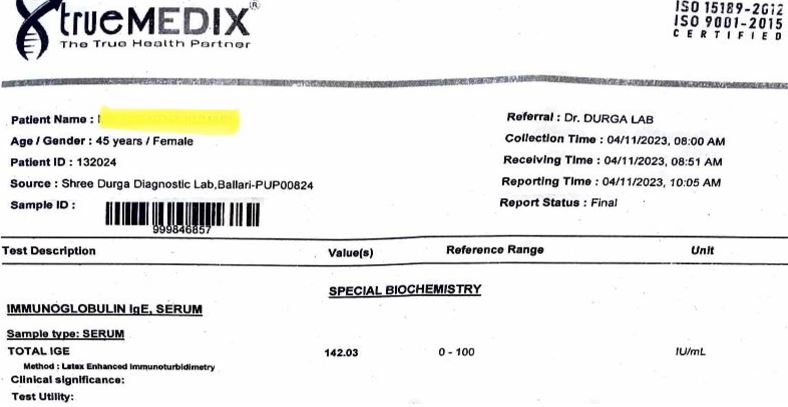Effective management of Kitibha Kushta (Plaque Psoriasis) using Ojavyapat Chikitsa (Hypersensitivity Line of Treatment): A Case Report
DOI:
https://doi.org/10.21760/jaims.10.5.32Keywords:
Kitibha Kushta, Ojovyapat Chikitsa, Psoriasis, Rasayana, AmavishaAbstract
Skin is the seat of complexion which depends on factors like nutrition, hygiene, circulation, age, immunity, genetic traits, psychological state. Psoriasis is a common long-lasting Auto-immune skin disease with prevalence of 0.44-2.8 percent in India. Psoriasis is typically present as erythematous plaque with silvery scales. Most common type of Psoriasis is Plaque Psoriasis in which each lesion is separated from other lesions with diameter of millimeters to centimeters. All the Twak Vikara in Ayurveda have been discussed under the broad heading of Kustha. Two types mainly Mahakushta and Kshudrakushta. This Kitibha Kushta which includes Shyava, Krishna Varna, Parushata, Khara sparsha, Kandu, Ghanatwa and Srava can be co-related to Plaque psoriasis. The Ayurvedic diagnosis was made as “Amavisha Janya Kitibha Kushta” and treatment was done on basis of this. The present article was prepared to assess the role of Amavisha Hara, Vishama Dhatu Chikitsa and Rasayana Chikitsa in such emerging autoimmune skin condition. Improvement in the skin lesion were observed after a period of 1 months of regular treatment and complete remission with no further attack after 2 months follow-up. The improvement was observable through the follow-up photograph.
Downloads
References
Chakrapanidatta. Ayurveda Deepika commentary on Charaka Samhita, Chikitsa Sthana. Reprint ed. Varanasi: Chaukhambha; 2015. p. 458.
Dalhana. Commentary on Sushruta Samhita, Chikitsa Sthana. Varanasi: Chaukhambha Vishwabharati Publications; 2005. p. 365.
Tripathi B. Charaka Samhita, Chikitsa Sthana. Varanasi: Chaukhamba Surabharati Prakashana; 2009. p. 7–22.
Wollina U. Pompholyx: a review of clinical features, differential diagnosis, and management. Am J Clin Dermatol. 2010;11:305–14.
Markantoni V, Kouris A, Armyra K, Vavouli C, Kontochristopoulos G. Remarkable improvement of relapsing dyshidrotic eczema after treatment of coexistent hyperhidrosis with oxybutynin. Dermatol Ther. 2014. Available from: https://doi.org/10.1111/dth.12514
Yoon SY, Park HS, Lee JH, Cho S. Histological and differentiation between palmoplantar pustulosis and pompholyx. J Eur Acad Dermatol Venereol. 2013;27:889–93.
Wollina U. Pompholyx: what’s new? Expert Opin Investig Drugs. 2008;17:897–904.
Wollina U. Pompholyx: a review of clinical features, differential diagnosis, and management. Am J Clin Dermatol. 2010;11:305–14.
Sushruta. Sushruta Samhita, Kalpa Sthana, Ch. 2, Shloka 33. English translation by Srikantha Murthy KR. Vol II. Varanasi: Chaukhambha Orientalia; p. 423.
Agnivesha. Charaka Samhita, Chikitsa Sthana, Ch. 23, Shloka 31. Commentary by Chakrapani Datta. In: Trikamji YT, editor. Varanasi: Chaukhambha Surbharati; 2010. p. 473.
Sushruta. Sushruta Samhita, Kalpa Sthana, Ch. 2, Shloka 29. English translation by Srikantha Murthy KR. Vol II. Varanasi: Chaukhambha Orientalia; p. 423.
Agnivesha. Charaka Samhita, Sutra Sthana, Ch. 28, Shloka 11–12. Commentary by Chakrapani Datta. In: Trikamji YT, editor. Varanasi: Chaukhambha Surbharati; 2010. p. 179.
Vagbhata. Ashtanga Hridaya, Sutra Sthana, Ch. 5, Shloka 38. Commentary by Arundatta and Hemadri. Edited by Prabhakara HS. Varanasi: Chaukhambha Surbharati Prakashan; p. 73.















